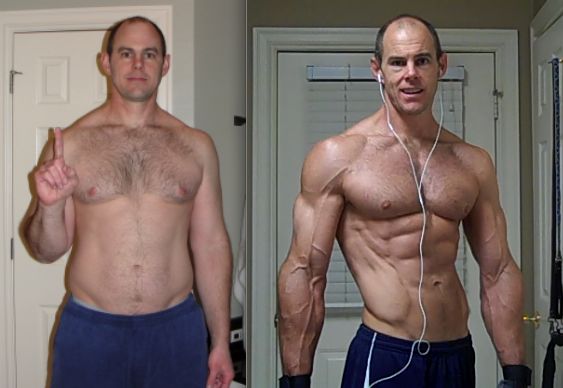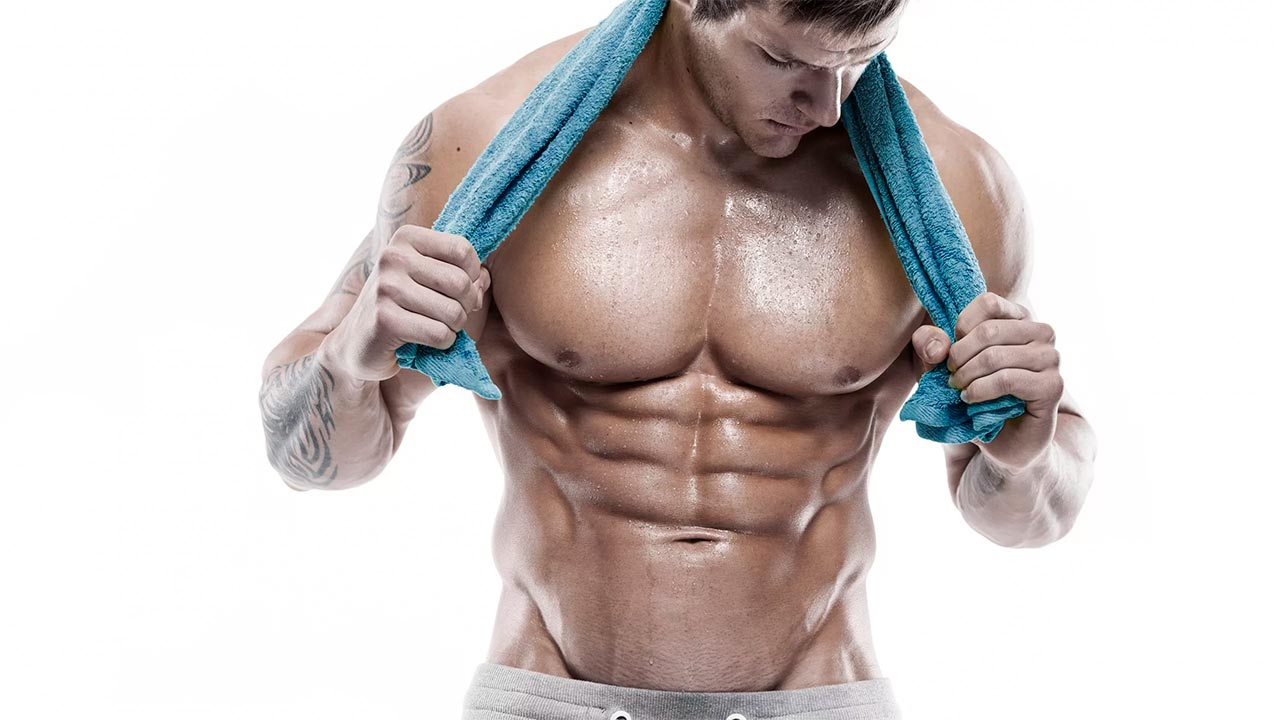
Delivery to the United States 10 days.
You can pay with your card!

With what words testosterone is not described - this is the hormone of happiness and love, and the hormone of kings and winners. In fact, this hormone is very important for the male reproductive system and the body as a whole. Today, its importance is noted both in the field of sports, and in bodybuilding in particular.
I would like to note one well-known property of testosterone - help in muscle mass growth.
Today, the myth is quite common and the increase in hormonal levels as a result of strength training. So, if a “newcomer” seeks the advice of an experienced trainer, they say, with what exercises you need to start, you will hear advice related to the choice of basic exercises. They attribute this to the fact that basic exercises supposedly contribute to the production of endogenous anabolic hormones. But they are unlikely to test blood after such training or read specialized literature. Therefore, professionalism in this matter is important, and not relying on the opinion of the one who “heard something”.
Alex Markowski, in Bodybuilding Made Simple, suggests that heavy exercise on many joints can contribute to the release of large amounts of testosterone and growth hormone into the bloodstream. He agrees with this statement, but this effect does not last more than a minute, but not an hour or three. So, the author thinks, why then even think about it because of the insignificance of the effect. Presumably, this was “tested” for fanatics who think that the quality of the result depends on the calculation of the grams gained. Well, for those who really care about testosterone in their blood, the author advises to go to bed and rest in good quality. For the reason that it is in a dream that the body produces the maximum of testosterone and the highest rates are observed in the morning, after you wake up.
Also interesting is a study by Japanese scientists entitled "Hormone and Recovery Responses to Resistance Exercise with Slow Movement". They studied bursts of hormones and their effects on muscle fiber repair.
Three different training patterns were studied - HN, LN, LS. The subjects were engaged in training quadriceps according to different schemes.
The graphs show the results. We see that the "dough" as it rose and fell. The use of classics of strength training - squats - had the opposite effect. Testosterone values have decreased.
Another experiment of the Japanese, which was the effect on the body of low-intensity exercises in hypoxia. This is a tug of warp and KAATSU.
Two types: REFR - KAATSU, CTRL– without blocking the blood flow.
As it turned out, no significant changes in testosterone production have occurred.
Another work, “Acute effects of different intensities of weight lifting on serum testosterone,” is a study of the behavior of testosterone in those involved in weightlifting.
Here are the squat protocols:
 Testosterone increased, but only by 10 minutes.
Testosterone increased, but only by 10 minutes.
In a study by M. Alvidrez and L. Kravitz, it was found that “weighted” workouts contribute to significant changes in the body immediately after exercise. Such shifts are important not only for slow muscle growth, but also for the long-term development of hypertrophy and strength. If you conduct training with the help of multi-component basic exercises, make the training volume large and vary its intensity from medium to high, this will allow you to achieve maximum changes in hormones, and at the same time optimize muscle growth.
Features of the changes in the girls' bodies were identified in "Alteration of testosterone: cortisol ratio induced by resistance training in women".
Researchers have come to the conclusion that it is very important to control the acute variables that are associated with resistive training techniques. Scientists are convinced that it is important to establish how to avoid adverse conditions and at the same time identify those protocols that are important for increasing adaptation with a plus sign. If you reduce the coefficient T: C after training, then we can talk about the resistive method as an intensive stimulus for the body. But the data on the restoration of the balance of T: C show that during rest, after two months of training, a process of supercompensation is observed. The results show that the MS method after 8 weeks provides good hormonal conditions for protein unification during the “pause”.
About experiments of the same kind - information in E. Darden's High-Intensity Training. He talks about a study by Dr. Goldberg and his colleagues. Through surgery, they removed the calf muscles on one leg in rats. Due to the fact that the rats needed to somehow compensate for this muscle when walking, they used soleus and plantar muscles. The last 2 types of muscles on the operated paws strengthened and grew when compared with healthy paws.
There was the next phase of the experiment. Rats were divided into 3 groups:
1st. They were injected with drugs that inhibit the production of growth hormone.
2nd. Suppression of insulin production.
3rd. Applied starvation diet, water intake.
Then all the animals, according to the plan of the experiment, ran in a wheel. When the experiment was completed, the soleus and plantar muscles grew in all rats that were operated on. This was observed in all three groups of rats. And this despite the fact that the use of resources for the growth of these muscles endangered the life of the whole body.
The conclusion of the researchers: when muscles stimulate, they will grow under any conditions.
Another experiment was the Greek - "Hormonal Responses after Various Resistance Exercise Protocols".
The study focuses on 11 men whose training experience is from two to eight years. They trained according to the following schemes:
There were 3 different situations associated with the use of two, four and six sets. In the center are basic exercises.
All results showed that the maximum testosterone was in those who had more repetitions. But is testosterone surge important?
Canadians tried to figure this out in “Elevations in ostensibly anabolic hormones with resistance exercise enhance neither training-induced muscle hypertrophy nor strength of the elbow flexors”.
Experiment: 12 men without health problems trained according to the following schemes:
 The result - after the HH regimen, testosterone levels increased by 1.5 times.
The result - after the HH regimen, testosterone levels increased by 1.5 times.
Here are what muscle hypertrophy and PPP increase were:
What do researchers think about this? They say that the hypothesis of raising hormone levels as a result of strength training does not stimulate protein pooling and is not an important condition for muscle hypertrophy. Thus, local processes in the muscles after training are more important in enhancing protein pool, which are caused by physical activity, rather than an increase in testosterone, growth hormone, and others. In addition, the latter do not affect the acceleration of muscle hypertrophy.
But why then are many athletes so eager to increase testosterone? Unclear.
So, a similar study was “Anabolic Processes in Human Skeletal Muscle: Restoring the Identities of Growth Hormone and Testosterone”. It was carried out by American experts.
So, the use of different training modes, in their opinion, helps in determining their effectiveness in increasing testosterone and growth hormone. If the workouts are large in volume and strength, then they activate the increase in muscle mass and require considerable effort and time. This is provided that we want to stimulate a large increase in testosterone and growth hormone. We measured protein synthesis and the “response” to biceps exercises, which were performed according to two schemes. Schemes:
1st. Did bending the arms. There was no surge in hormones.
2nd. They bent their arms, and then a difficult exercise for the legs. After the last exercise, endogenous hormones increased. At the 15th minute - there was a peak in hormone levels. An hour later, the hormones "returned" to their previous state.
Bottom line: the rate of protein union in both schemes in the muscles of the hands increased, but the speed of this process did not differ in performance.
So, bursts of hormones depend on training patterns. But there is no effect on muscle mass gain. Your body cannot produce enough testosterone naturally. In addition, such testosterone only “serves” the cells, but does not stimulate muscle growth.
A few more global conclusions can be drawn about this:
Testosterone does not affect muscle gain. It works after the advent of new compounds, according to the already planned receptors;
The physiological dose of testosterone is an important condition for the life of muscle cells;
The more “meat” - the higher the testosterone receptors - the more testosterone the body produces for continuous protein renewal;
It makes no sense to work solely on the growth of hormones in the blood;
There are no growth patterns influenced by testosterone;
The hormone system should be within normal limits;
If testosterone rises - this is not for long;
With an increase in the amount of "meat" spent, testosterone production at certain receptors also increases.